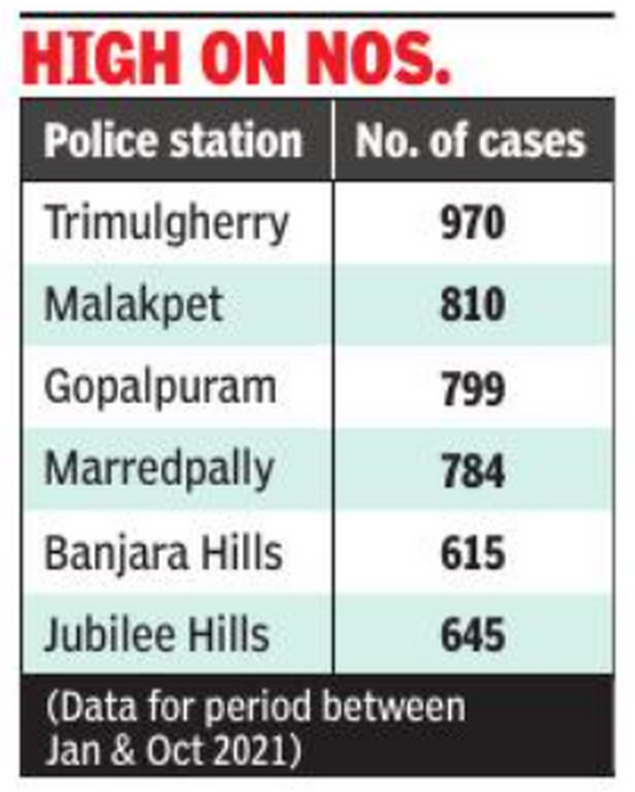Top Searches
- News
- City News
- Hyderabad News
- After Telangana high court jolt, cops scramble to clear 6,000-vehicle pile-up
After Telangana high court jolt, cops scramble to clear 6,000-vehicle pile-up
After Telangana high court jolt, cops scramble to clear 6,000-vehicle pile-up

Image used for representational purpose only
HYDERABAD: For at least the past five years, police officers in Hyderabad loved to play the finger-wagging school master with people caught driving their car or bike in an inebriated state. The cops would seize the vehicle and return it only after the owner went to court and a counselling session. This would take at least a few days if not more.
The counselling sessions stopped in a couple of police commissionerates after the pandemic struck but the seizing of vehicles continued. No wonder then that the three police commissionerates in the city are now left with the task of quickly returning more than 6,000 vehicles after the Telangana high court said that the police did not have the power to make such seizures.

The frequency with which vehicles were seized can be gauged from the fact that in 2021 alone, the Hyderabad police commissionerate seized 16,500 vehicles. This effectively means more than 45 vehicles were seized daily and that too in just one police district. The cops also filed charge sheets in 7,269 cases. A senior police officer told STOI, “The order has to be implemented and it will be done.”
Did the seizures help in bringing down the number of drunk driving cases in Telangana? The latest National Crime Records Bureau data shows that state saw 1,328 accidents caused by drunk drivers in 2020 - the highest in the country. As many as 343 people died in these accidents, which is the second highest in the country after Uttar Pradesh.
On Saturday, officials at the Hyderabad and Cyberabad commissionerates started returning vehicles, one day after the high court order was reported. Sources, however, said the officials are also seeking legal opinion on the court’s order.
The maximum number of vehicles were seized in Trimulgherry and Malakpet in Hyderabad. In Cyberabad commissionerate limits, Kukatpally, Madhapur and Rajendranagar saw maximum seizures.
The high court, while hearing a clutch of petitions challenging the seizures, said that the police cannot seize vehicles. They should either hand the vehicle over to a co-passenger who has not had alcohol or contact a person, who is known to the drunk driver. A motorist whose blood alcohol count is above 30 mg/100 ml is treated as driving under the influence of alcohol.
The counselling sessions stopped in a couple of police commissionerates after the pandemic struck but the seizing of vehicles continued. No wonder then that the three police commissionerates in the city are now left with the task of quickly returning more than 6,000 vehicles after the Telangana high court said that the police did not have the power to make such seizures.

The frequency with which vehicles were seized can be gauged from the fact that in 2021 alone, the Hyderabad police commissionerate seized 16,500 vehicles. This effectively means more than 45 vehicles were seized daily and that too in just one police district. The cops also filed charge sheets in 7,269 cases. A senior police officer told STOI, “The order has to be implemented and it will be done.”
Did the seizures help in bringing down the number of drunk driving cases in Telangana? The latest National Crime Records Bureau data shows that state saw 1,328 accidents caused by drunk drivers in 2020 - the highest in the country. As many as 343 people died in these accidents, which is the second highest in the country after Uttar Pradesh.
On Saturday, officials at the Hyderabad and Cyberabad commissionerates started returning vehicles, one day after the high court order was reported. Sources, however, said the officials are also seeking legal opinion on the court’s order.
The maximum number of vehicles were seized in Trimulgherry and Malakpet in Hyderabad. In Cyberabad commissionerate limits, Kukatpally, Madhapur and Rajendranagar saw maximum seizures.
The high court, while hearing a clutch of petitions challenging the seizures, said that the police cannot seize vehicles. They should either hand the vehicle over to a co-passenger who has not had alcohol or contact a person, who is known to the drunk driver. A motorist whose blood alcohol count is above 30 mg/100 ml is treated as driving under the influence of alcohol.
FacebookTwitterLinkedinEMail
Start a Conversation
end of article

